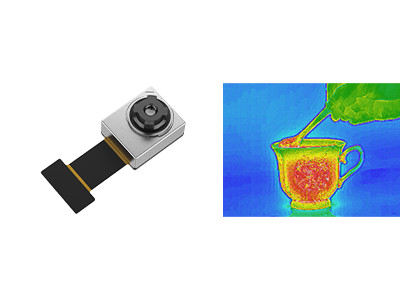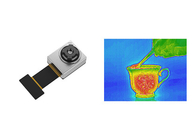-
Thermal Camera Core
-
Thermal Security Camera
-
Drone Thermal Camera
-
EO IR Systems
-
Cooled Infrared Detectors
-
Thermal Imaging Binoculars
-
Cooled Camera Modules
-
Optical Gas Imaging
-
Infrared Thermal Camera Module
-
High Resolution Thermal Camera Module
-
Thermal Camera For Fever Detection
-
Vehicle Mounted Thermal Camera
-
Integrated Dewar Cooler Assembly
-
Uncooled Infrared Detectors
Miniature VOx FPA Thermal Imaging Camera Module 120x90 17μM

Contact me for free samples and coupons.
Whatsapp:0086 18588475571
Wechat: 0086 18588475571
Skype: sales10@aixton.com
If you have any concern, we provide 24-hour online help.
x| Spectral Range | 8~14μm | NETD | ≤60mK |
|---|---|---|---|
| Resolution | 120x90 | Pixel Pitch | 17μm |
| Temperature Range | -20℃~+120℃ (Customizable) | Size | 8.5x8.5x9.16mm |
| Highlight | Miniature Thermal Imaging Camera Module,FPA Thermal Imaging Camera Module,Thermal Camera Core 17uM |
||
Miniature VOx FPA 120x90 / 17μm Thermal Imaging Camera Core Integrated in Infrared Cameras
TIMO120 miniature infrared module integrates wafer-level optics, 120x90 / 17μm wafer level package (WLP) detector and basic image processing circuit to quickly obtain thermal images of the target area and heat distribution.
TIMO120 thermal imaging core is oriented for optimized size, weight, power, cost (SWaP-C) infrared imaging applications. Its super miniature structure and ultralow power consumption are convenient to be integrated into various smart devices, thermal imagers or mobile terminals with strict requirements on cost, size and weight.
- Minimum WLP infrared module, dimension at 8.5x8.5x9.16mm
- DVP Interface, compatible with various embedded platforms
- Visible camera module equivalent, directly integration
- Complete SDK development kit
- Low power design for extend longer operating time
- Low cost for many kinds of intelligent applications
| Model | TIMO-120 |
| IR Detector Performance | |
| Resolution | 120x90 |
| Pixel Pitch | 17μm |
| Spectral Range | 8~14μm |
| NETD | ≤60mK |
| Lens Type | WLO |
| Focus Mode | Fixed Zoom |
| HFOV | 90°/50° |
| Depth of Field | 10cm to Infinity |
| Frame Rate | 1~30Hz (Customizable) |
| Temperature Measurement | |
| Temperature Range | -20°C ~ +120°C (Customizable) |
| Temperature Accuracy | Customizable (Meet the Requirements of Body or Industrial Thermography) |
| Interface/Control | |
| AVDD | 3.6V±0.05V |
| VSK/VDET | 4.7±0.05V |
| DVDD | 1.8V±0.05V |
| Interface | Digital Interface |
| Power Consumption | 45mW (Typical Mode); 9mW (Low Power Mode) |
| Physical Characteristics | |
| Dimension (mm) | 12x10x5.48 (HFOV=90°); 8.5x8.5x9.16 (HFOV=50°) (The Specifications Shall Prevail) |
| Operation Temperature | -20°C ~ +60°C |
| Storage Temperature | -40°C ~ +85°C |
The TIMO120 infrared thermal camera core is widely used in many areas, such as Thermography, Intelligent Hardware, Smart Building, Smart Home, AIoT etc.
![]()
![]()
1. Thermal Image Vs. Visual Image
Visible light is an electromagnetic wave that can be seen by humans. Its wavelength range generally falls between 360-400 nm~760-830nm. This electromagnetic spectrum is also called the visible spectrum, and its frequency range is 830-750THz~395-360THz.
Infrared is an electromagnetic wave with a wavelength between microwave and visible light. Its wavelength is between 760 nanometers (nm) and 1 millimeter (mm). It is an invisible light with a wavelength longer than red light. The frequencies are approximately in the range of 430 THz to 300 GHz.
2. Detector of Thermal Image & Visual Image
For the core detectors of imaging device, visible light devices use the CCD and CMOS detector, while thermal imaging uses cooled and uncooled detector. The main difference is that visible light CCD/CMOS can perceive light waves in the visible light band, and thermal imaging detectors can sense thermal radiation light waves in the infrared band. Infrared thermal imaging detectors are divided into many types according to different manufacturing processes and packaging materials. The more macroscopic feeling is that infrared thermal imaging detectors are more expensive than visible light CCDs.




